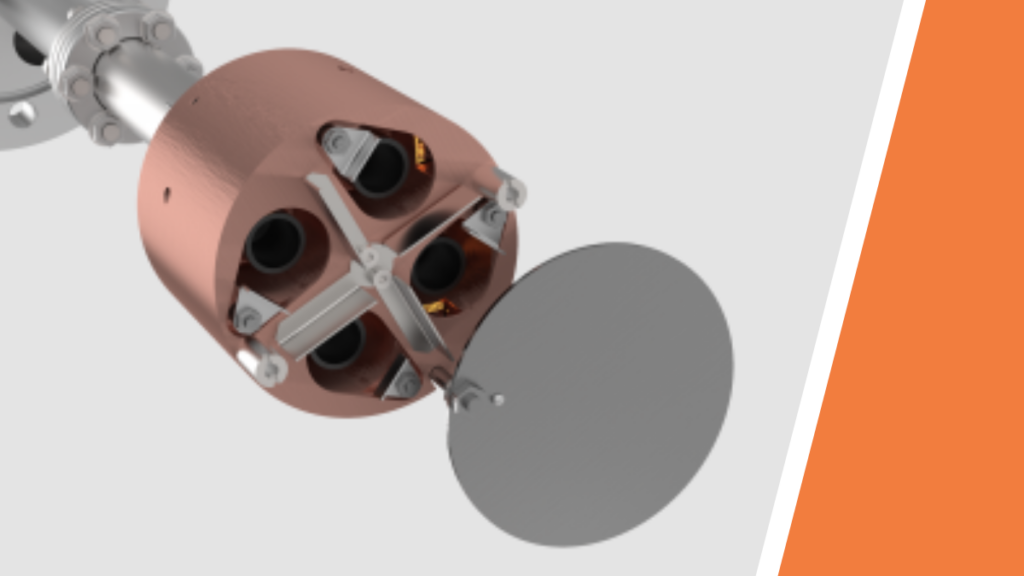The capabilities of thin films are what help them to be utilized in a variety of applications, including optics, energy, and electronics. All these applications are possible thanks to the thin film’s influence over the characteristics of a surface. Thin films are only thin material layers, with thicknesses between several nanometres – micrometres, but when they’re placed on a surface, they can transform its attributes, enhancing its optical performance and hardness, establishing electrical conductivity, or decreasing friction. Electron beam evaporation, also known as e-beam evaporation, is utilized as a technique for producing these thin films. Let’s have a closer look at this thin-film deposition method and the advantages that come with it.
Basics of E-Beam Evaporation
What is E-Beam Evaporation?
Utilized as a technique for generating thin films onto a substrate, e-beam evaporation is a subset of physical vapor deposition (PVD), a vacuum-based procedure that delivers coatings which contain unique attributes. E-beam evaporation produces thin films with a focused electron beam that ensures a material is heated and vaporized. The material then condenses and generates a thin film upon a substrate.
How Do You Undertake E-Beam Evaporation?
E-beam evaporation begins with a vacuum chamber. This vacuum chamber stops contamination from occurring and makes sure the vaporized material can move straight to the substrate. An electron gun is used to produce a beam containing high-energy electrons through the application of a thermionic emitter, for instance a tungsten filament. Magnetic fields are then used to hone in the electron beam, directing it towards the material. In a compact e-beam instrument the electron beam directly heats a rod or crucible. This electron beam can heat the material so it reaches its evaporation point, transforming it into a vapor. From there, vaporized atoms move through the vacuum before condensing on a substrate and producing a layer of thin film.
Advantages of Using E-Beam Evaporation
1. High-Purity Films
Films that possess high purity offer a better performance. They experience less defects and thus can deliver enhanced optical, mechanical, and electrical attributes. This purity also helps lower failure rates in equipment like sensors, optical systems, and semiconductors.
E-beam evaporation can produce these high-quality films due to their offering of localized heating. Only the target material is heated by the electron beam. Ergo, it’s less likely that any additional components or crucibles will experience contamination. The ability to offer selective heating also ensures impurities will not be able to go into the vapor stream.
2. Uniformity
A thin film with uniformity is one that can function and perform well. Establishing uniformity in thin films ensures they’re able to deliver the right properties, for instance mechanical, electrical, chemical, or optical, for a certain application. E-beam evaporation can manage the deposition process and, thus, provide uniform film quality. Its electron beam ensures the target material has its temperature raised evenly. Therefore, it can generate a vapor flow that’s consistent. By establishing a steady evaporation rate, uniform film deposition can be produced as time progresses.
3. Thickness
Another benefit of using e-beam evaporation is its ability to ensure thin films have a precise thickness level. E-beam evaporation is able to deliver a means of control at nanometer-level accuracy through the application of real-time monitoring systems, such as a quartz crystal microbalance. It can also handle the thickness of these thin films through managing deposition rate. As the power of the electron beam can be altered, this means the evaporation rate of the target material can be overseen, thus delivering a steady evaporation rate that helps film production to be even and offer the expected level of thickness. E-beam evaporation’s control over thickness means it can produce thin films that meet a required performance.
4. Materials
The amount of materials that e-beam evaporation can deposit as a thin film is extensive. With this versatility, e-beam evaporation can be used in numerous industries, including energy, optics, and electronics. Not only can e-beam evaporation be utilized for materials with higher melting points, such as ceramics, tungsten, and molybdenum, that may be more difficult for alternative deposition techniques, but it can be applied to the deposition of pure metal thin films, including those formed from silver, platinum, and aluminium. It can also be used with nitrides and oxides, as well as polymers and organic compounds.
Is E-Beam Evaporation The Technique For You?
E-beam evaporation is a strong choice for producing thin films. It works with a range of materials and ensures they possess purity, uniformity, and the right thickness levels. However, there are other forms of PVD, such as sputtering, that may be of interest when generating thin films. We, Nikalyte, have PVD systems that are utilized for thin films, as well as multilayer stacks, composites, and nanoparticles. Whether your work is in photonics, catalysis, energy storage, or life sciences, we have the PVD systems you need that can fit in well with your work. Talk to our experts to learn more about our equipment.

